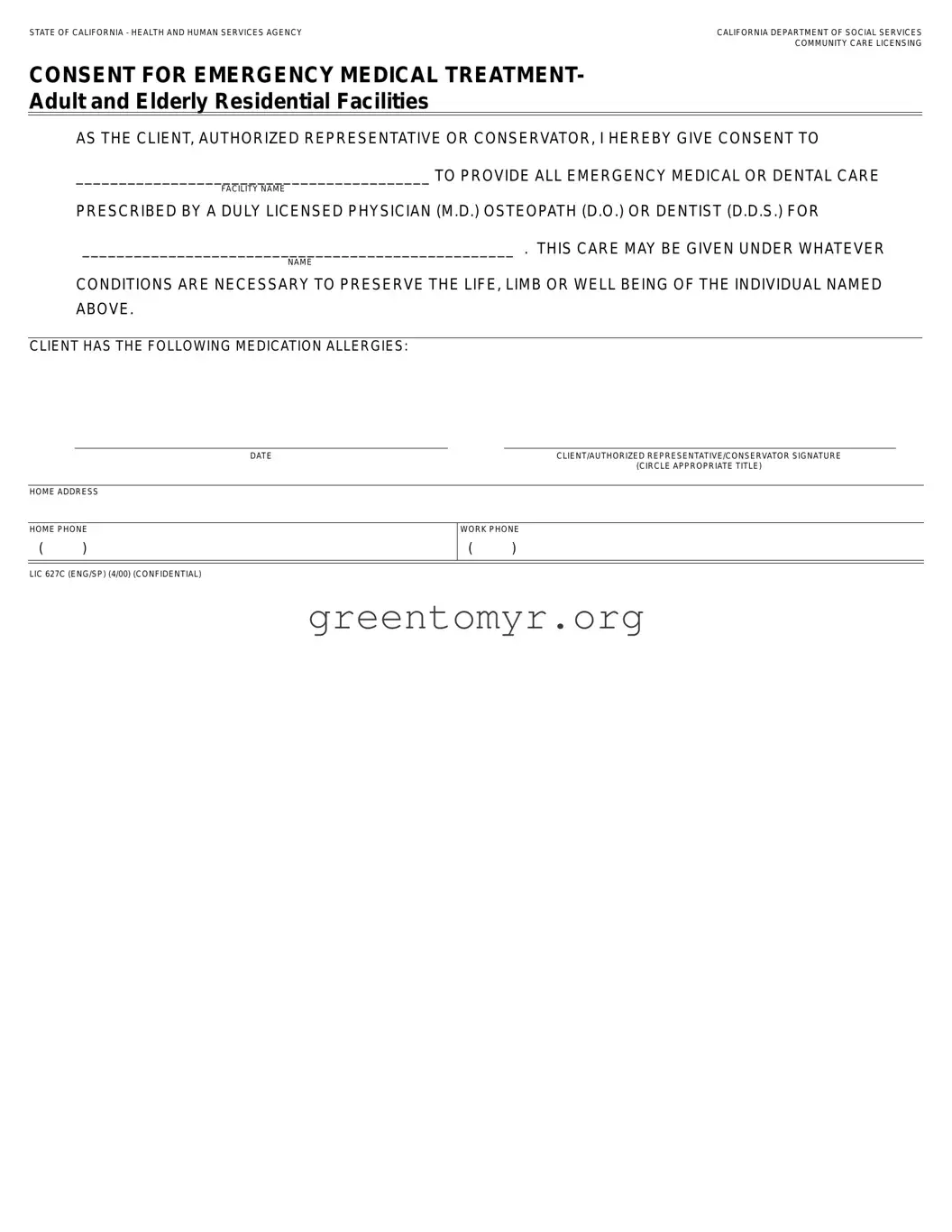Fill in a Valid Lic 627C Template
The Lic 627C form is a document used in California that grants consent for emergency medical treatment for clients in adult and elderly residential facilities. It ensures that a designated facility can provide necessary medical care prescribed by licensed healthcare professionals to preserve the well-being of the individual. Understanding and completing this form is crucial for ensuring appropriate treatment in urgent situations.
To fill out the Lic 627C form, please click the button below.

